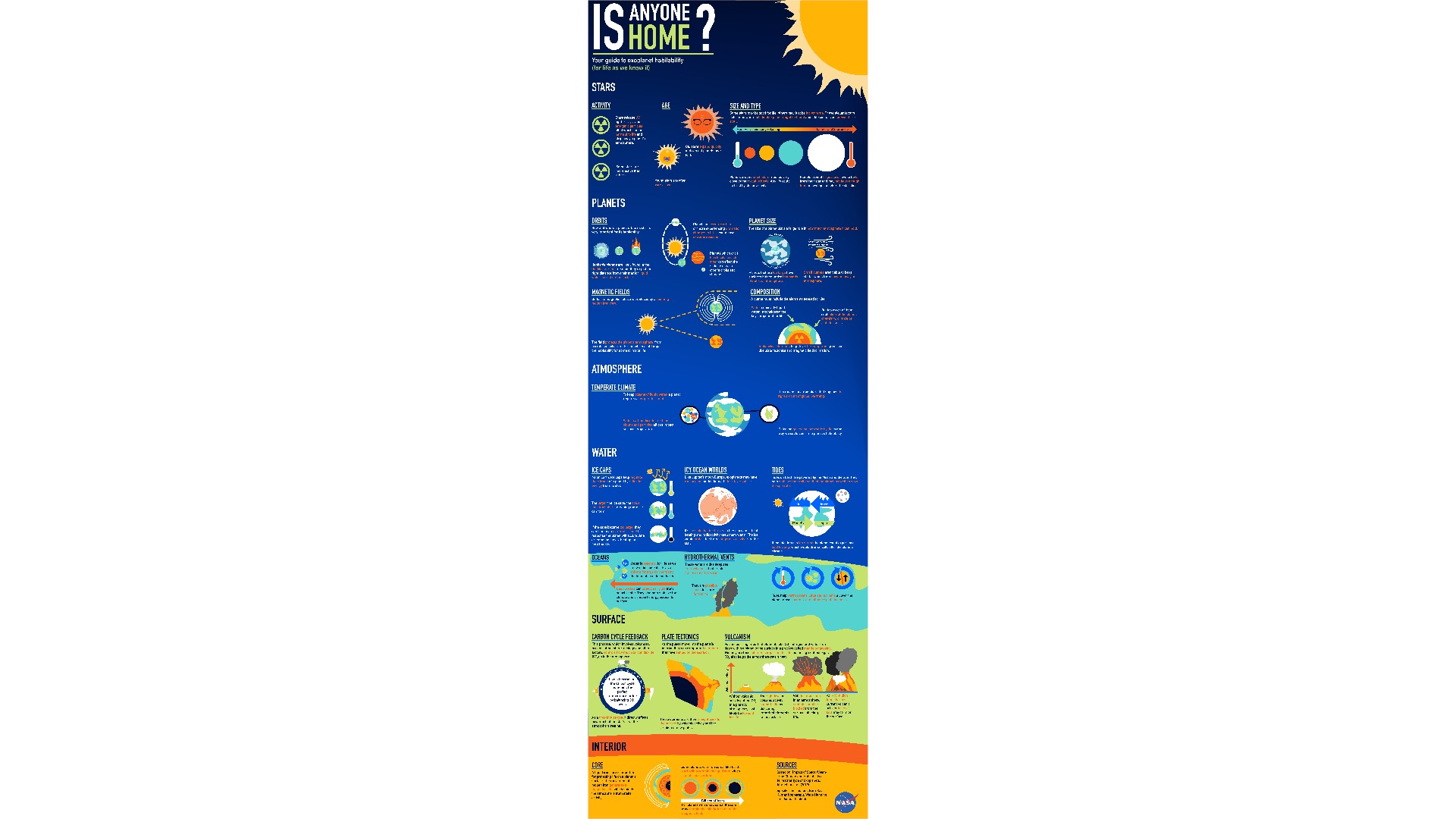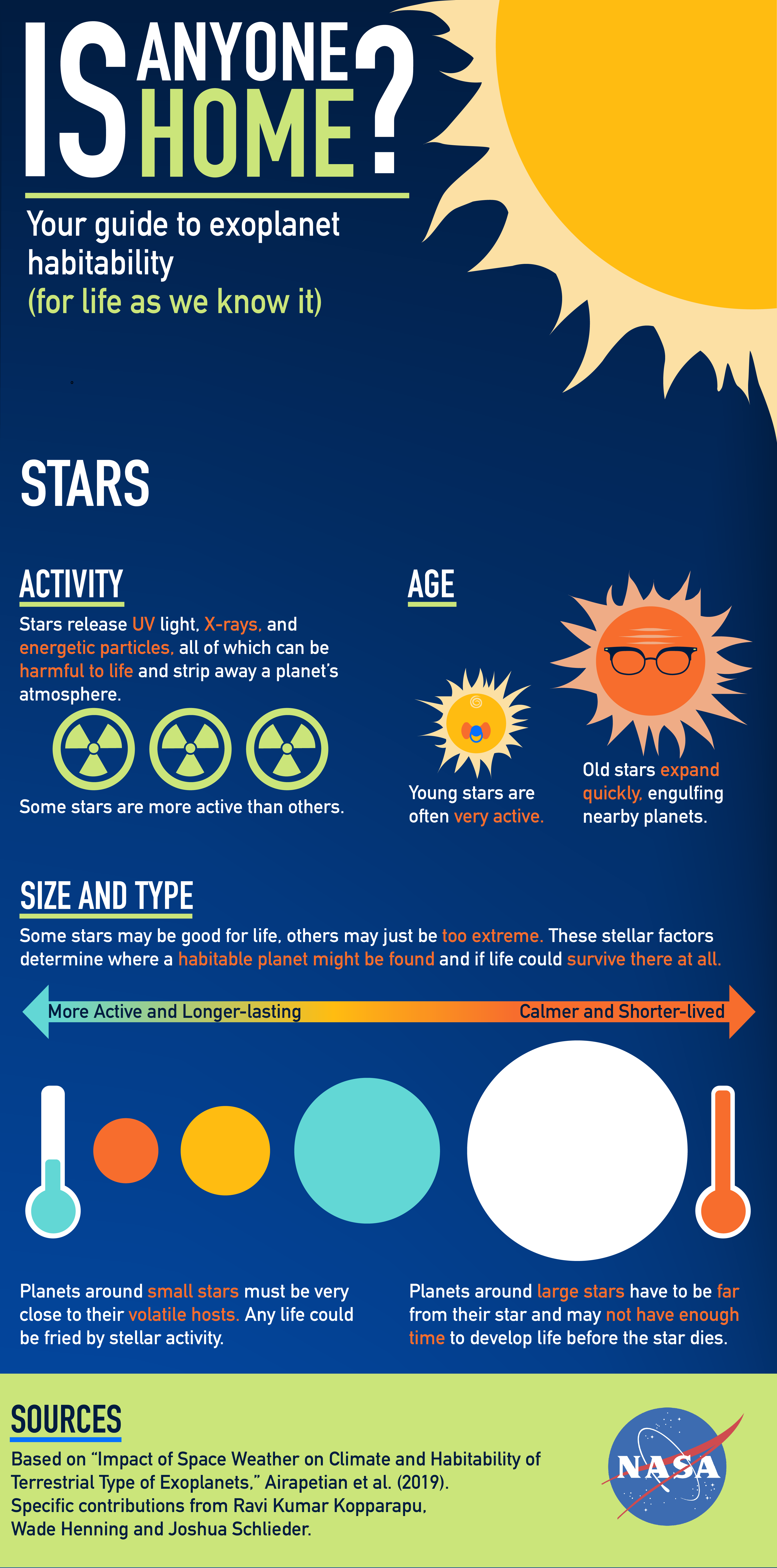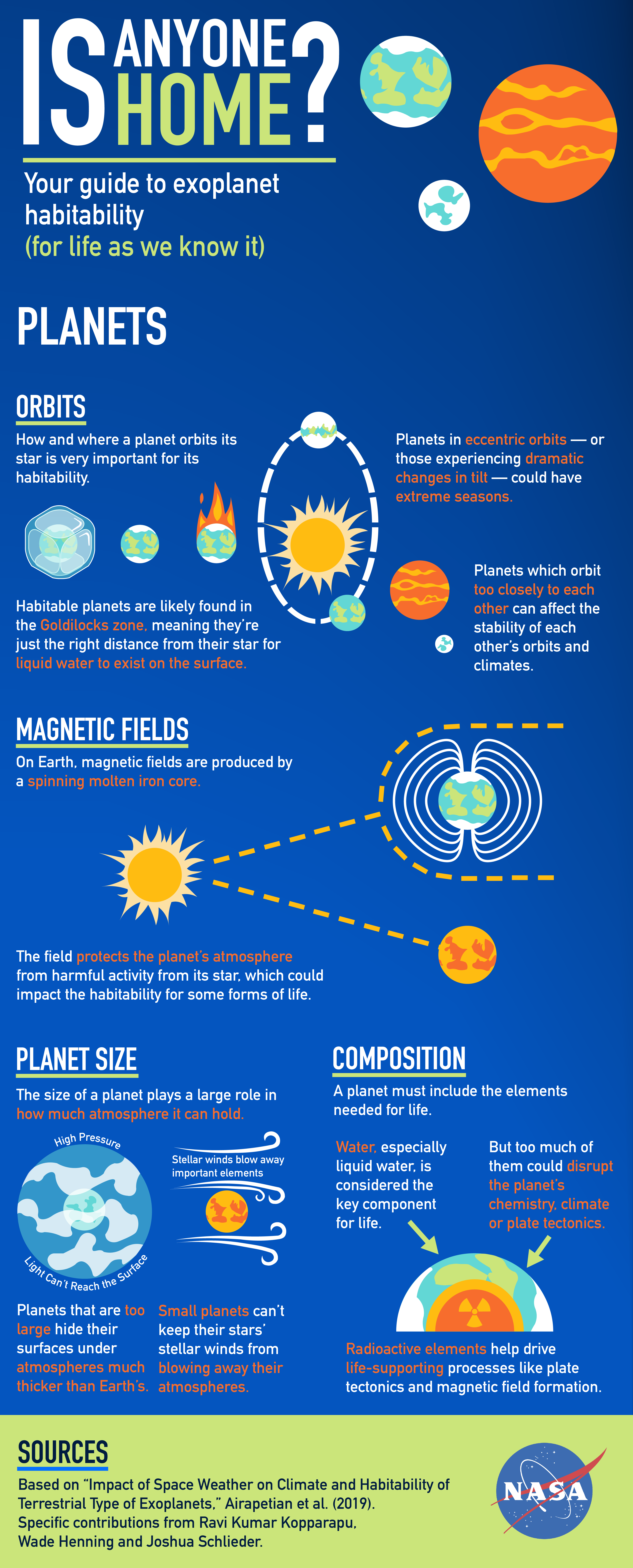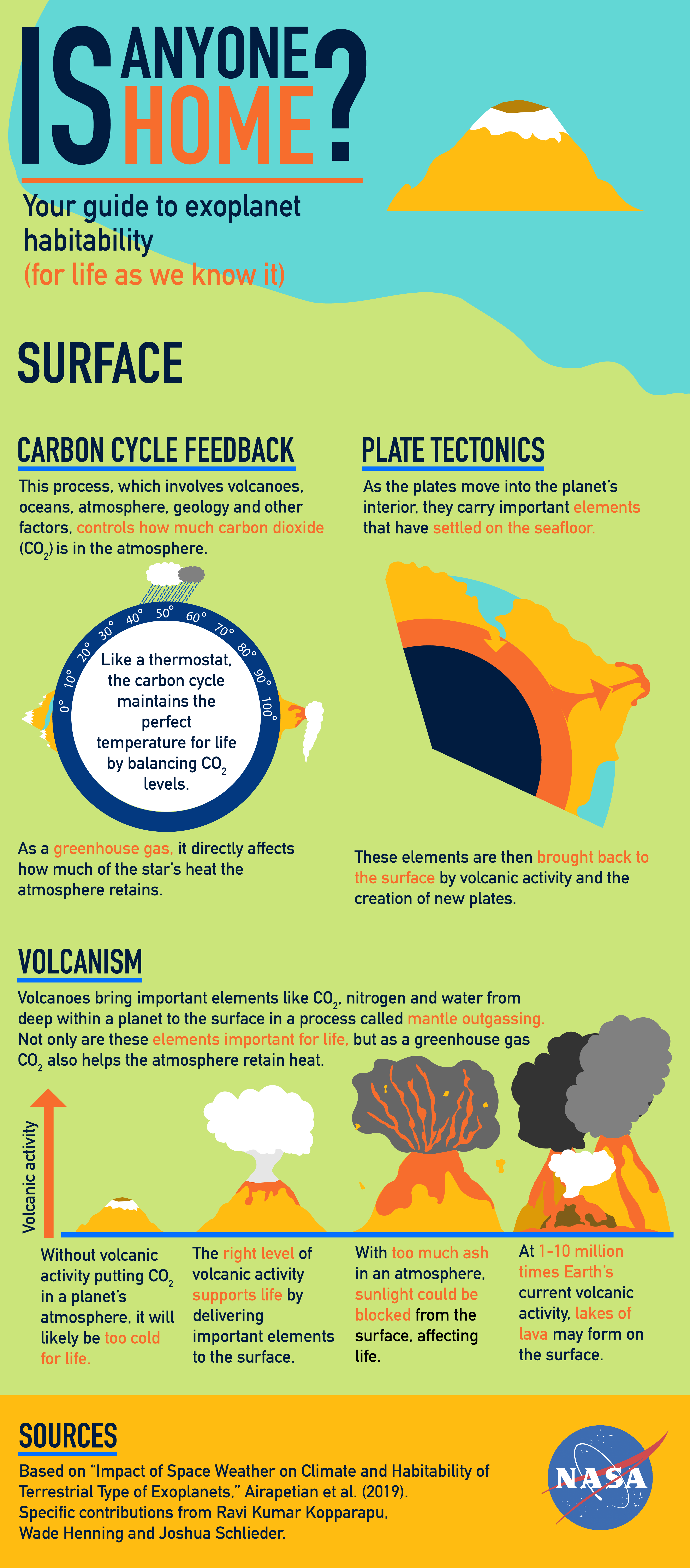Universe
ID: 13526

This infographic explores some of the many factors that affect whether a planet can support life as we know it. A habitable planet is one that can sustain life as we know it for billions of years. A planet’s ability to harbor life results from the complex interplay between its host star, its own orbit and rotation, and the make-up of its surface and interior. One required ingredient for habitability is liquid water, so the planet must orbit in the region around its star where liquid water can exist on its surface. This region is called the habitable zone. But that alone is not enough — there are many other considerations that go into a planet’s potential for supporting life. PDF versions of the graphics tagged for screen readers are available at the bottom of this page.







What Makes an Exoplanet Habitable?








Related Documentation
Habitability_Infographic_Atmosphere_FINAL.pdf
Habitability_Infographic_FULL_11x91_FINAL.pdf
Habitability_Infographic_FULL_24x70_FINAL.pdf
Habitability_Infographic_Interior_FINAL.pdf
Habitability_Infographic_Planets_FINAL.pdf
Habitability_Infographic_Star_FINAL.pdf
Habitability_Infographic_Surface_FINAL.pdf
Habitability_Infographic_Water_FINAL.pdf
Habitability_Infographic_FULL_11x91_FINAL.pdf
Habitability_Infographic_FULL_24x70_FINAL.pdf
Habitability_Infographic_Interior_FINAL.pdf
Habitability_Infographic_Planets_FINAL.pdf
Habitability_Infographic_Star_FINAL.pdf
Habitability_Infographic_Surface_FINAL.pdf
Habitability_Infographic_Water_FINAL.pdf
Credits
Ravyn Cullor (GSFC Interns): Lead Designer
Ravyn Cullor (GSFC Interns): Lead Artist
Barb Mattson (University of Maryland College Park): Producer
Claire Andreoli (NASA/GSFC): Public Affairs Officer
Francis Reddy (University of Maryland College Park): Science Writer
Jeanette Kazmierczak (University of Maryland College Park): Science Writer
Scott Wiessinger (USRA): Technical Support
Ravyn Cullor (GSFC Interns): Lead Artist
Barb Mattson (University of Maryland College Park): Producer
Claire Andreoli (NASA/GSFC): Public Affairs Officer
Francis Reddy (University of Maryland College Park): Science Writer
Jeanette Kazmierczak (University of Maryland College Park): Science Writer
Scott Wiessinger (USRA): Technical Support
Please give credit for this item to:
NASA's Goddard Space Flight Center. However, individual items should be credited as indicated above.
NASA's Goddard Space Flight Center. However, individual items should be credited as indicated above.
Short URL to share this page:
https://svs.gsfc.nasa.gov/13526
This item is part of these series:
Narrated Movies
Astrophysics Stills
Keywords:
SVS >> Astrophysics
NASA Science >> Universe
SVS >> Exoplanet
SVS >> Habitability
SVS >> Infographic
https://svs.gsfc.nasa.gov/13526
This item is part of these series:
Narrated Movies
Astrophysics Stills
Keywords:
SVS >> Astrophysics
NASA Science >> Universe
SVS >> Exoplanet
SVS >> Habitability
SVS >> Infographic











